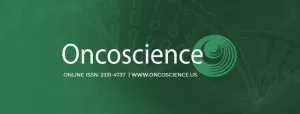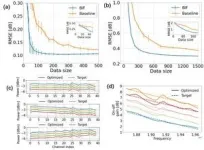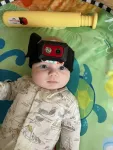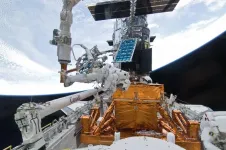Therapeutic opportunities for hypermutated urothelial carcinomas beyond immunotherapy
2024-05-10
(Press-News.org)
“These results argue that combinations based on immunotherapy may also provide an opportunity for targeting urothelial cancers with low TMB, and provide efficacy superior to classic chemotherapy.”
BUFFALO, NY- May 10, 2024 – A new editorial paper was published in Oncoscience (Volume 11) on April 25, 2024, entitled, “Therapeutic opportunities for hypermutated urothelial carcinomas beyond immunotherapy.”
In this new editorial, researcher Ioannis A. Voutsadakis from Sault Area Hospital and Northern Ontario School of Medicine discusses tumor mutation burden (TMB)—a novel clinical biomarker for prediction of checkpoint inhibitor immunotherapy response across cancers. High TMB has been used as a tumor agnostic indication for treatment with the PD-1 inhibitor pembrolizumab. High TMB is also associated with defects in mismatch repair (MMR) proteins producing the microsatellite instability (MSI) phenotype, which is also a biomarker of response to immune checkpoint inhibitors.
“However, both biomarkers are imperfect and not all cancers with high TMB or MSI phenotype respond to immunotherapy.”
The reason for this phenomenon may relate to additional alterations present in some tumors with high TMB or may be due to differences in the immune environment of diverse cancers. Conversely, some tumors with no MMR alterations have high TMB, and their hypermutability, which is due to other defects, such as pathogenic proofreading polymerase epsilon (POLE) mutations, may still lead to immunotherapy sensitivity. A sub-set of urothelial carcinomas possess a high TMB. Urothelial carcinomas with high TMB have only rarely MMR protein or POLE mutations but present additional alterations in higher frequency than cancers with low TMB, including mutations in several epigenetic modifiers.
“Combinatorial approaches based on immunotherapy and targeting additional molecular defects, that are present in urothelial carcinomas, hold the hope for successful therapy of the sub-set of immune checkpoint inhibitor resistant urothelial carcinomas with high TMB and of urothelial carcinomas with low TMB.”
Continue reading: DOI: https://doi.org/10.18632/oncoscience.596
Correspondence to: Ioannis A. Voutsadakis
Emails: ivoutsadakis@yahoo.com, ivoutsadakis@nosm.ca
Keywords: bladder cancer, transitional cell carcinoma, immune checkpoint inhibitors, targeted therapy
About Oncoscience:
Oncoscience is a peer-reviewed, open-access, traditional journal covering the rapidly growing field of cancer research, especially emergent topics not currently covered by other journals. This journal has a special mission: Freeing oncology from publication cost. It is free for the readers and the authors.
To learn more about Oncoscience, visit Oncoscience.us and connect with us on social media:
X, formerly Twitter
Instagram
Facebook
YouTube
LinkedIn
For media inquiries, please contact media@impactjournals.com.
Oncoscience Journal Office
6666 East Quaker Str., Suite 1D
Orchard Park, NY 14127
Phone: 1-800-922-0957, option 4
###
END
[Attachments] See images for this press release:


ELSE PRESS RELEASES FROM THIS DATE:
2024-05-10
By Rose Miyatsu, UC Santa Cruz Genomics Institute
Although you may not appreciate them, or have even heard of them, throughout your body, countless microscopic machines called spliceosomes are hard at work. As you sit and read, they are faithfully and rapidly putting back together the broken information in your genes by removing sequences called “introns” so that your messenger RNAs can make the correct proteins needed by your cells.
Introns are perhaps one of our genome’s biggest mysteries. They are DNA sequences that interrupt the sensible protein-coding information ...
2024-05-10
Professor Manolya Kavakli is an expert in gamification
Her talk will examine the complex relationship between humans, computers and tech
She will examine how digital developments have the potential to improve lives and modernise industry.
The latest inaugural lecture at Aston University will look at the complex relationship between humans, computers and technology.
Professor Manolya Kavakli will discuss progress so far and offer insights into how to ease into digital transformation for the challenges that lie ahead.
The professor is an expert in gamification, the process of using elements of gaming in non-gaming situations such as learning and training.
She ...
2024-05-10
There are 62.5 million internally displaced persons worldwide, according to 2022 data by the UNHCR, the United Nations Refugee Agency. These individuals were forced to leave their homes but remain in the same country.
Prior research has shown that internally displaced persons often experience prejudice and discrimination, as residents in their new locale fear that the migrants may be insurgents or criminals, or compete for jobs.
Now, a new Dartmouth study involving Afghanistan indicates that changing such attitudes is an uphill battle. Given the decades of fighting there, Afghanistan has had one of the largest populations ...
2024-05-10
A breakthrough study, published in Science Translational Medicine, features a biomedical engineering innovation with the potential to transform trauma care and surgical practices. Chapman University’s Fowler School of Engineering Founding Dean and Professor, Andrew Lyon, is a member of this multidisciplinary, multi-university scientific research team developing platelet-like particles that integrate into the body’s clotting pathways to stop hemorrhage. Sanika Pandit, an alumna of Chapman University, is also among the 15 authors in this research.
Addressing a longstanding gap in surgical and trauma care, this advancement holds potential for patient implementation. Patients ...
2024-05-10
ROCHESTER, Minn. — Melanoma, an aggressive form of skin cancer that accounts for 75% of all skin-cancer-related deaths, is often detected later in people with darker skin complexions — and the consequences can be devastating, a Mayo Clinic study reveals.
While melanoma may be found less frequently in people with darker complexions than fair ones, this potentially serious form of cancer can strike anyone. The study, which consisted of 492,597 patients with melanoma, suggests that added vigilance in early screening is particularly needed for Black men, whose cancers ...
2024-05-10
What do infants see? What do they look at? The answers to these questions are very different for the youngest babies than they are for older infants, children and adults. Characterized by a few high-contrast edges in simple patterns, these early scenes also contain the very materials needed to build a strong foundation for human vision.
That is the finding of a new study, “An edge-simplicity bias in the visual input to young infants,” published on May 10 in Science Advances by IU researchers Erin Anderson, Rowan Candy, Jason Gold and Linda Smith.
“The starting ...
2024-05-10
New research into molten rock 20km below the Earth’s surface could help save lives by improving the prediction of volcanic activity.
Volcanic eruptions pose significant hazards, with devastating impacts on both people living nearby and the environment.
They are currently predicted based on activity of the volcano itself and the upper few kilometres of crust beneath it, which contains molten rock potentially ready to erupt.
However, new research highlights the importance of searching for ...
2024-05-10
The discovery of how a critical enzyme “hidden in nature’s blueprint” works sheds new light on how cells control key processes in carbon fixation, a process fundamental for life on Earth.
The discovery, made by scientists from The Australian National University (ANU) and the University of Newcastle (UoN), could help engineer climate resilient crops capable of sucking carbon dioxide from the atmosphere more efficiently, helping to produce more food in the process.
The research, published in Science Advances, demonstrates a previously unknown function of an enzyme called carboxysomal carbonic anhydrase (CsoSCA), which is found in cyanobacteria – also called ...
2024-05-10
Fifteen years ago, human hands touched NASA's Hubble Space Telescope for the last time.
As astronauts performed finishing tasks on the telescope during its final servicing mission in May 2009, they knew they had successfully concluded one of the most challenging and ambitious series of spacewalks ever conducted. But they couldn’t have known at the time what an impact they had truly made.
“I had high hopes that Hubble would last at least five years more, and maybe even a little more to overlap with Webb,” said astronaut and former associate administrator for NASA's Science Mission Directorate John ...
2024-05-10
55 Cancri e is one of five known planets orbiting a Sun-like star in the constellation Cancer. With a diameter nearly twice that of Earth and a density slightly greater, the planet is classified as a super-Earth: larger than Earth, smaller than Neptune, and similar in composition to the rocky planets in our solar system.
Brice-Olivier Demory from the Center for Space and Habitability CSH of the University of Bern and member of the NCCR PlanetS is co-author of the study that has just been published in Nature. He ...
LAST 30 PRESS RELEASES:
[Press-News.org] Therapeutic opportunities for hypermutated urothelial carcinomas beyond immunotherapy





